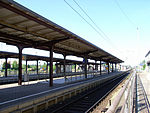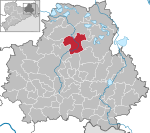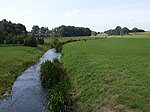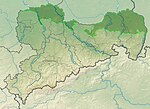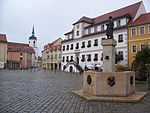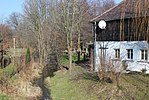Dubringer Moor

The Dubringer Moor (Upper Sorbian: Dubrjenske bahno, pronounced [ˈdubʁʲɛnskɛ ˈbahnɔ]), is a nature reserve (NSG) in the Bautzen district in northern Saxony. It lies within the three municipalities of Bernsdorf, Hoyerswerda and Wittichenau and covers an area of around 1,711 hectares. It is thus one of the largest nature reserves in Saxony. In addition to areas of forest and grassland the nature reserve also includes several waterbodies (predominantly ponds) and bogs. The bog depression of the Dubringer Moor comprises intermediate and low-moor bogs (including an open, regenerated moorland) and is classified as a percolation bog (Durchströmungsmoor). The area is one of the largest surviving bog complexes in Upper Lusatia.The reserve, which was first designated in 1995, bears the official index number D78. Due to its ecological significance and subsequent designation it has since become part of the Natura 2000 network of protected areas within the EU. In 2011 a slightly smaller and largely coextensive Special Area of Conservation, Dubringer Moor (EU code DE-4550-301) was created. In addition, the nature reserve, expanded by several areas of open country to the east, was designated as a bird reserve (EVG and SPA) also called Dubringer Moor (Code DE-4550-451).
Excerpt from the Wikipedia article Dubringer Moor (License: CC BY-SA 3.0, Authors, Images).Dubringer Moor
Dubring,
Geographical coordinates (GPS) Address Nearby Places Show on map
Geographical coordinates (GPS)
| Latitude | Longitude |
|---|---|
| N 51.396662 ° | E 14.197598 ° |
Address
Dubring
02997
Saxony, Germany
Open on Google Maps

